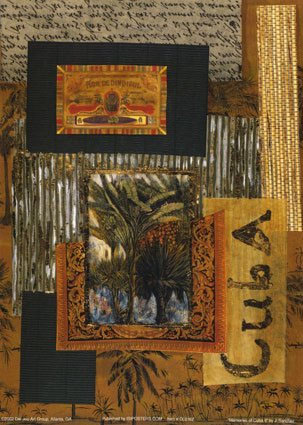|
CARIBBEAN MUSIC & DANCE |
| Home | PUERTO RICO | CUBA | DOMINICAN REPUBLIC |
|
The Republic of Cuba is the largest island in the Caribbeans that consists of the main island and other smaller islands. Its culture is influenced by the indigenous people, the Spanish, the African slaves, and the United States. Cuba, like Puerto Rico and Dominican Republic, was discovered by Christopher Columbus in 1492. The island had previously been inhabited by the Taíno and the Ciboney whose ancestors had come from South America. However, the population of the natives diminished quickly from diseases, enslavement, and genocide during the Spanish colonization.28 The Spaniards also brought African slaves into Cuba starting in 1526. The many efforts rebellion was suppressed. It was not until 1886 that slavery was abolished. Cuba was seized by the French and the British for brief periods, but was under control of Spain for a duration of 388 years. The Cubans fought for their independence during the Ten Years War (1868-1878), and declared to be an independent republic in 1895. Cuba were free of Spanish control after U.S. intervention in 1898, but were subject to U.S. intervention under the Cuban constitution and the Platt Amendment. Thereafter, the Cuban government went through various changes. Fulgencio Batista’s regime (1933-1959) carried out major social reforms, but was marked by severe corruption and poverty. It was during Fidel Castro’s regime that many Cubans began to immigrate to the U.S. This happened in four waves, each composed of distinct group of people with different reasons. The first wave consisted of politicians and businessmen as businesses were nationalized. The second wave was of those against the communist state of Cuba, which Castro proclaimed in 1961. Most of the Cubans that arrived during this time were of the educated, upper and middle classes. In 1980, around 125,000 Cubans, mostly released convicts, arrived by boats through the port of Mariel. These people of the third wave were called “Marielitos.” The fourth was due to the fall of the Soviet Union in 1991, when economic situations became unbearably difficult. Currently, the U.S. admits 20,000 Cubans every year.29 Cubans have settled mainly in Miami, Florida and also Tampa, Florida and Union City, New Jersey. Though Cuban Americans represent a total of only 4% of the Hispanic population in the United States, they have influenced much of Latin American culture.30 |
|
|
